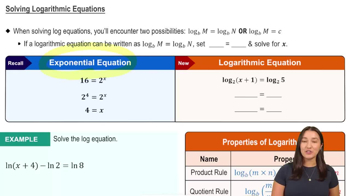Computer Explorations
Use a CAS to perform the following steps in Exercises 55–62.
b. Using implicit differentiation, find a formula for the derivative dy/dx and evaluate it at the given point P.
2y² + (xy)¹/³ = x² + 2, P(1,1)
 Verified step by step guidance
Verified step by step guidance Verified video answer for a similar problem:
Verified video answer for a similar problem:



 5:14m
5:14mMaster Finding The Implicit Derivative with a bite sized video explanation from Patrick
Start learning